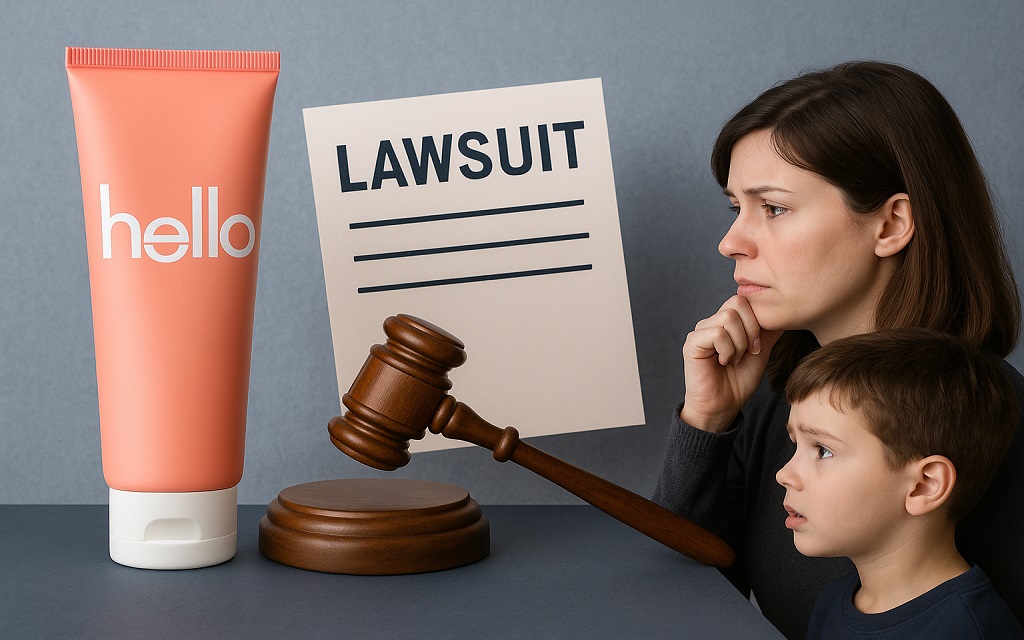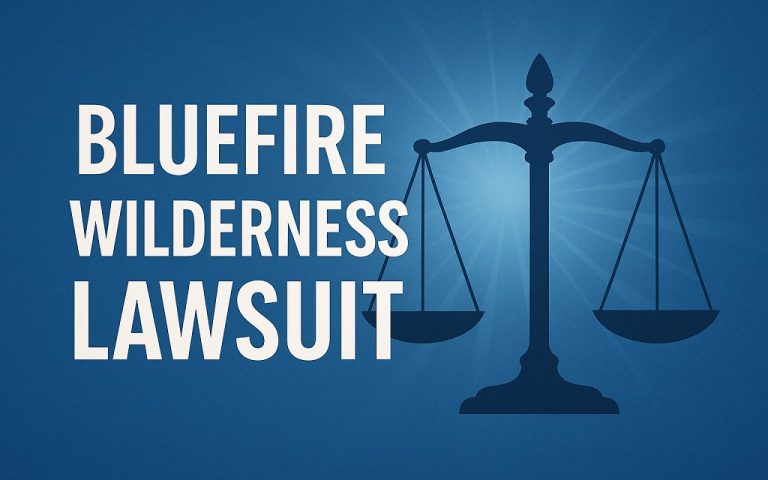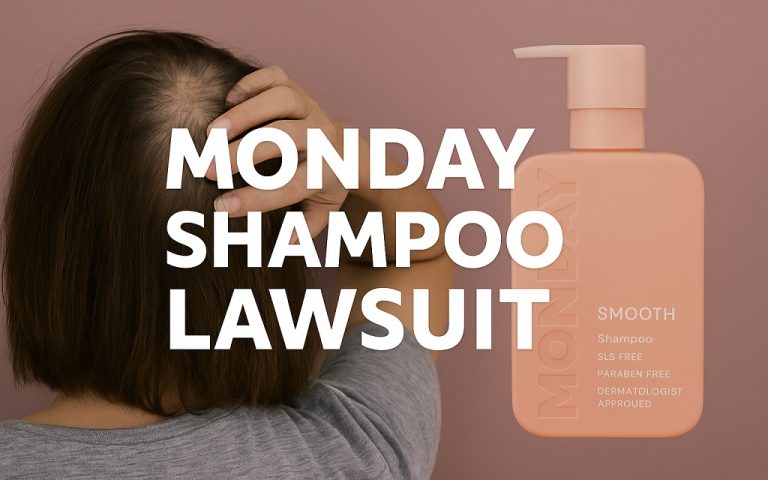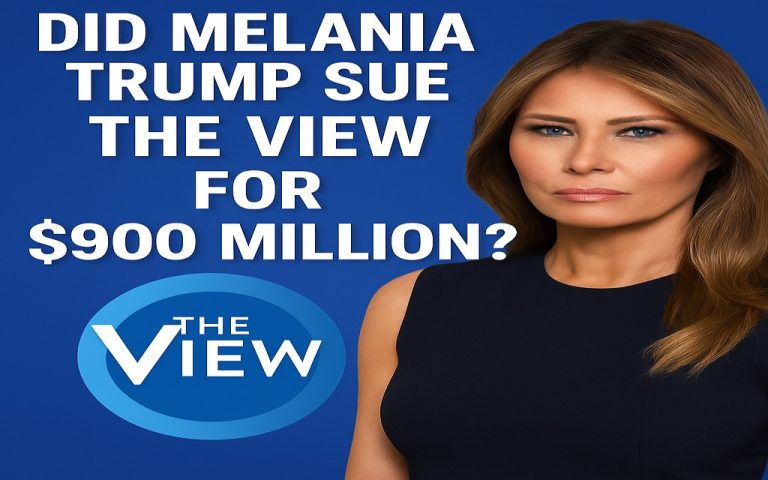Hello Toothpaste built its brand around trust. It markets clean ingredients and a friendly design. Parents saw it as a natural, safe choice. But now, the Hello Toothpaste Lawsuit questions that trust.
Lawsuits claim Hello misled families. The Hello Toothpaste Lawsuit puts those claims under the spotlight. The brand promised gentle care. Legal complaints say it delivered something else—a potential risk, especially for young children.
Families want answers. They want to know if cute packaging and fun flavors hide serious dangers.
Why the Hello Toothpaste Lawsuit Matters
This lawsuit affects more than one household. It raises national questions about:
- Product safety
- Marketing to children
- Fluoride use in oral care
- Parental trust in “natural” products
- Consumer protection laws
The Hello Toothpaste Lawsuit highlights a broader legal battle. Brands that promote natural claims must still protect children. If they don’t, parents have legal tools to fight back.
What Is Hello Toothpaste?
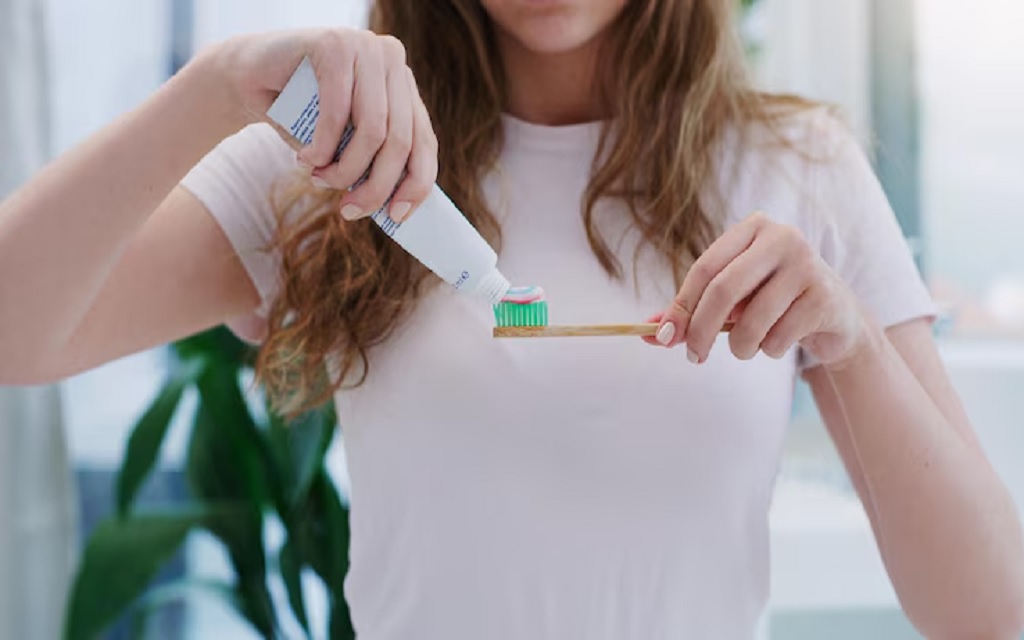
Hello Toothpaste comes from Hello Products LLC, acquired by Colgate-Palmolive in 2020. The brand markets itself as:
- Fluoride-free (optional in some products)
- Dye-free
- SLS-free
- Vegan
- Cruelty-free
- Safe for kids
Its playful packaging uses bright colors. Flavors include Bubble Gum, Unicorn Splash, and Wild Strawberry. The look feels friendly. The design feels safe. But lawsuits say that the image may mislead.
Hello sells:
- Adult pastes (fluoride and fluoride-free)
- Charcoal whitening pastes
- Mouthwash products
- Children’s pastes with or without fluoride
The brand grew fast. It carved a niche among health-conscious families. But now, that success faces legal fire.
Must Read: Native Shampoo Lawsuit : What You Need to Know About PFAS, Safety, and Legal Claims
Why Parents Filed the Hello Toothpaste Lawsuit
The lawsuit began when families noticed a problem. Kids were swallowing toothpaste. The packaging made it look like candy. The flavors tasted like snacks.
Some versions of Hello toothpaste contain fluoride. Ingesting too much fluoride can cause harm, especially in children under six.
Parents say Hello failed to warn them. Lawsuits claim the brand:
- Encouraged kids to swallow
- Used packaging that mimicked treats
- Avoided clear warnings
- Made fluoride use seem harmless
The Hello Toothpaste Lawsuit focuses on one question: Did Hello promote safety while hiding risk?
Key Legal Allegations in the Hello Toothpaste Lawsuit
The lawsuits against Hello list several claims. Each one ties back to alleged misrepresentation or failure to warn.
Here are the significant points:
- No clear warning about fluoride ingestion
- Bright packaging and sweet flavors encourage swallowing
- Cartoon-like design mimics candy or toys
- Charcoal toothpastes may cause enamel erosion
- Marketing ignores safety guidelines from dental professionals
The plaintiffs say Hello broke consumer trust. They argue the company’s branding strategy made risky ingredients seem harmless.
Fluoride Risks in Children’s Toothpaste
Fluoride helps prevent tooth decay. It strengthens enamel. Dentists often recommend it. But it can become dangerous—especially for young children.
Kids under six may swallow toothpaste by mistake. Their small bodies absorb more fluoride than adults.
Too much fluoride may cause:
- Dental fluorosis (white streaks or spots on teeth)
- Stomach pain
- Nausea or vomiting
- Toxic reactions in high doses
The FDA and American Dental Association (ADA) warn against fluoride mouthwash for kids under six. They also advise caution with fluoride toothpaste unless under dental supervision.
Despite this, Hello sells kid-focused products that contain fluoride. The lawsuit says the fun packaging hides the risk.
Flavors and Designs That Look Like Candy
The Hello Toothpaste Lawsuit highlights a key concern—design deception.
Hello’s branding includes:
- Bright pinks, blues, and greens
- Cartoon fonts
- Flavors like Unicorn Splash, Bubble Gum, and Blue Raspberry
- Bottles shaped like toys or snack pouches
These features may appeal to children. The lawsuit argues this encourages swallowing. Parents say the brand blurred the line between a health product and a treat.
The fluoride warnings, they argue, are too small or unclear. Many feel the brand built its image around trust—then ignored safety.
What’s the Problem With Charcoal Toothpaste?
Hello sells several charcoal toothpaste products. These aim to whiten teeth naturally. But some experts warn against regular charcoal use.
Charcoal acts as a mild abrasive. It scrubs stains off the teeth. But in doing so, it may also erode enamel—the outer layer that protects teeth from decay.
Here’s what enamel loss can cause:
- Tooth sensitivity
- Higher cavity risk
- Permanent damage
Dentists often compare charcoal toothpaste to “sandpaper for teeth.” They say it may do more harm than good if used daily.
Hello claims its charcoal formulas are safe. But lawsuits argue the brand fails to disclose enamel risks. They say Hello’s “natural” message ignores long-term effects.
Did Hello Mislead Parents?
That’s the core question in the Hello Toothpaste Lawsuit.
Critics argue:
- The branding appeals to kids but hides chemical concerns
- The flavors mask risk, making the paste taste like candy
- The packaging mimics snacks or toys
- The marketing lacks clear safety instructions
- The fluoride warnings don’t meet parental expectations
Each of these claims ties back to a larger legal theme: deceptive marketing. The lawsuit doesn’t just focus on ingredients. It focuses on how Hello presented those ingredients to parents.
Regulatory Backdrop: What the FDA and ADA Say
The FDA regulates fluoride-containing toothpaste as an over-the-counter (OTC) drug. Brands must follow strict rules on:
- Ingredient safety
- Proper labeling
- Dosage guidance
- Child-specific warnings
The American Dental Association (ADA) offers seal approval for toothpaste that meets professional standards. It warns against giving fluoride products to children without supervision.
The Hello Toothpaste lawsuit claims the brand failed to meet those standards in its kid-focused marketing. It argues the company was unable to align its message with public health guidance.
What Kind of Case Is the Hello Toothpaste Lawsuit?
This is a consumer protection lawsuit. It focuses on how Hello marketed its products—especially fluoride toothpaste and charcoal variants—without giving proper safety warnings.
The legal action includes:
- Claims of false advertising
- Failure to warn
- Negligent misrepresentation
- Breach of implied warranties
- Violations of state consumer protection laws
Some plaintiffs also seek class action certification. That means one case could cover thousands of buyers across the country.
The lawsuit doesn’t claim intentional harm. It says Hello made toothpaste look too safe, too fun, and too child-friendly—without enough warning.
How Class Action Lawsuits Work in Cases Like This
A class action lawsuit lets one or more people sue on behalf of a larger group. In the Hello Toothpaste Lawsuit, the class could include:
- Parents who bought fluoride-containing Hello products
- Families who trusted the “natural” and “kid-safe” branding
- Consumers who relied on packaging claims
To qualify as a class action, the case must prove:
- Commonality: All buyers faced the same issue (e.g., misleading safety claims)
- Typicality: The named plaintiffs represent everyone fairly
- Numerosity: Too many people to sue individually
- Adequacy: The plaintiffs and lawyers can handle the case properly
If a judge agrees, the case moves forward as a class. That allows eligible consumers to join or receive notice of settlement options.
What Laws Apply in the Hello Toothpaste Lawsuit?
Many state and federal laws regulate the marketing of products. Several appear in this case.
1. State Consumer Protection Laws
Each state has its own laws. Here are some that may come into play:
California
Unfair Competition Law (UCL)
False Advertising Law (FAL)
Consumer Legal Remedies Act (CLRA)
New York
General Business Law §§ 349–350
Illinois, Florida, and Texas
Similar laws that prohibit deceptive or unfair trade practices
These laws focus on reasonable consumer standards. That means the court asks, “Would an average parent be misled by this label or ad?”
2. Federal Law
While the lawsuit is state-based, two federal agencies help shape expectations:
- FDA: Regulates fluoride toothpaste as an OTC drug. Requires correct dosage info and proper warnings.
- FTC: Oversees advertising claims. Enforces truth-in-advertising laws. False or unsubstantiated claims can trigger penalties.
What Do Plaintiffs Have to Prove?
In a case like this, plaintiffs must show:
- They saw and relied on the brand’s marketing
- The marketing was misleading or incomplete
- They suffered harm or would not have bought the product if properly informed
- The company knew or should have known the risks or the misleading nature
It’s not enough to dislike the product. They must prove that Hello failed to warn or misrepresented the safety of its toothpaste materially.
Key Legal Questions in the Hello Toothpaste Lawsuit:
- Did Hello’s kid-friendly designs and candy-like flavors create a misleading impression?
- Were the fluoride warnings too small, too vague, or placed in a location where parents wouldn’t notice?
- Did Hello overlook known risks associated with enamel damage from charcoal or fluoride ingestion?
- Would parents have bought something else if they had complete information?
How Does Hello’s Marketing Fit Into Legal Trouble?
Hello used a fun, friendly image to build trust. That strategy now faces scrutiny. Here’s what lawyers say may have crossed the line:
| Marketing Element | Legal Issue |
|---|---|
| Bright colors and cartoons | May attract children without signaling risk |
| Flavor names like Bubble Gum or Unicorn Splash | May encourage swallowing like candy |
| “Naturally friendly” slogans | May downplay the presence of fluoride or abrasive ingredients |
| Absence of large warnings | May violate FDA and ADA guidance for kids under 6 |
| Claims like “safe for children” without context | May mislead reasonable parents |
This isn’t about one sour flavor or isolated packaging. The lawsuit argues there is a systematic strategy that confuses safety with sweetness.
Who Owns Hello Toothpaste?
Hello Products LLC is no small startup. It was acquired in 2020 by Colgate-Palmolive, a global oral care giant. The deal was valued at $351 million, according to corporate filings.
This means Hello’s legal challenges may now involve:
- Colgate’s broader product safety standards
- Colgate’s liability for subsidiary actions
- Colgate’s duty to monitor child safety in branding
Some lawsuits target Hello directly. Others list Colgate-Palmolive as a co-defendant, especially in federal filings.
What Role Does the FDA Play in This?
The Food and Drug Administration (FDA) classifies fluoride toothpaste as an over-the-counter drug. That means it:
- Must list fluoride concentration
- Must include a poison warning for kids
- Must warn not to swallow
- Must follow strict formatting for labels
If Hello missed any of these steps—or presented warnings in a way that parents couldn’t easily see—it may violate FDA guidelines.
What About the ADA’s Role?
The American Dental Association (ADA) gives its Seal of Acceptance to products that meet professional safety and efficacy standards. Many Hello products do not carry this seal.
The ADA warns:
- Fluoride toothpaste for children under six should be used only under parental guidance
- Charcoal products may erode enamel and cause sensitivity
- Toothpaste packaging should not encourage ingestion
The Hello Toothpaste Lawsuit argues the brand ignored those cautions.
Timeline of the Hello Toothpaste Lawsuit
The legal concerns didn’t begin overnight. They followed years of growing consumer trust—and rising scrutiny.
Here’s how the timeline unfolded:
| Date | Event |
|---|---|
| 2020 | Colgate-Palmolive acquires Hello Products for $351 million |
| 2021–2022 | Dentists raise concerns about charcoal toothpaste and child fluoride use |
| Early 2023 | Parents and dental experts begin social media discussions on Hello’s “candy-like” design. |
| August 10, 2023 | Voluntary recall of Hello Wild Strawberry Fluoride Toothpaste (labeling mix-up) |
| Late 2023 | First formal complaints filed in California and New York |
| 2024 | Class action motions filed; product safety reviews begin |
| 2025 | National media reports widen lawsuit attention; new plaintiffs join |
No product recall exists for all Hello toothpastes. But legal filings may push for stronger warning labels or future regulation.
Will Hello Settle the Case?
Right now, no settlement has been announced. But several outcomes are possible:
- Dismissal if the court finds no legal basis
- Early settlement if Hello or Colgate wants to avoid trial
- Class certification followed by payout offers
- Trial if no agreement is reached
If settled, outcomes may include:
- Cash refunds or store credits
- Medical cost coverage
- Label changes or packaging redesign
- Court orders for future testing or warning systems
Parents may not need to take action immediately. If certified, class members could be notified automatically.
How to Check If You’re Eligible to Join
You may qualify as part of the Hello Toothpaste Lawsuit class if:
- You bought Hello products for your child
- Your child used fluoride toothpaste from Hello
- You were unaware of the ingestion risks
- You relied on the packaging to make a safe decision
- You believe the product caused harm or created confusion
To prepare, you should:
- Keep receipts, email confirmations, or purchase records
- Save the product or take photos of the bottle and box
- Record any relevant medical visits or symptoms
- Talk to a consumer protection attorney about your rights
If the lawsuit advances, the court or a claims administrator may open a formal claim portal.
Must Read: Prime Drink Lawsuit: Need to Know About Legal Concerns Over Prime Energy
Glossary of Key Terms in the Hello Toothpaste Lawsuit
| Term | Meaning |
|---|---|
| Fluorosis | A condition causing white spots or streaks on developing teeth from excess fluoride |
| Charcoal toothpaste | A product that uses activated charcoal to scrub stains off teeth may cause enamel loss. |
| Class action | A lawsuit where one or more plaintiffs represent a large group with similar claims |
| FDA | U.S. Food and Drug Administration, which regulates drugs and some cosmetic products, like toothpaste |
| ADA | The American Dental Association sets guidelines for dental products and children’s oral health. |
| SLS | Sodium lauryl sulfate, a foaming agent often avoided in “natural” toothpaste brands. |
| False advertising | Legal term for promoting a product in a misleading way that affects consumer decisions |
| Settlement | An agreement reached between parties in a lawsuit, often including payments and policy changes |
| Recall | Official request to return a product due to safety concerns or labeling errors |
FAQs
What is going on with Hello toothpaste? Did it get recalled?
A voluntary recall was issued on August 10, 2023, for Hello Wild Strawberry Fluoride Toothpaste due to a labeling mix‑up that could mislead consumers about fluoride content.
Apart from that specific lot, as of mid‑2025, there have been no additional recalls reported.
Does Hello toothpaste have a recall history?
No, there hasn’t been a recall of Hello toothpaste as of yet. Nonetheless, consumer concerns and legal actions can force authorities to intervene.
Does Hello toothpaste contain sodium lauryl sulfate?
No — many Hello toothpaste formulas are explicitly SLS-free, with ingredient lists and retail listings confirming that they contain no sodium lauryl sulfate.
Who owns Hello toothpaste?
Hello Products LLC was acquired by Colgate‑Palmolive in 2020 (for reportedly around $351 million) and is now operated under that parent company.
Is Hello toothpaste FDA approved?
Toothpastes aren’t “FDA‑approved” before sale, but fluoride‑containing Hello products are regulated as over‑the‑counter (OTC) drugs and must meet FDA requirements; the recalled batch lacked proper labeling, prompting the recall.
Conclusion: What Parents Should Do Now
The Hello Toothpaste Lawsuit is more than a court case. It is a wake-up call.
Just because something looks natural doesn’t mean it’s safe. Just because packaging looks fun doesn’t mean it’s free of risk. Parents trusted Hello. Now, some feel that trust was betrayed.
Here’s what to do:
- Check what’s in your bathroom
- Read every label—twice
- Ask your dentist about the right products for your kids
- Track medical issues related to toothpaste or mouthwash
- Stay updated on court progress
- Get legal advice if your child suffered harm
You have the right to ask hard questions. You have the right to expect honest answers. And you have the right to take legal action if a brand’s image puts your child at risk.
Disclaimer: This article provides a general overview of the Hello Toothpaste lawsuit, based on publicly available information, and is intended for informational purposes only. It is not legal advice.

